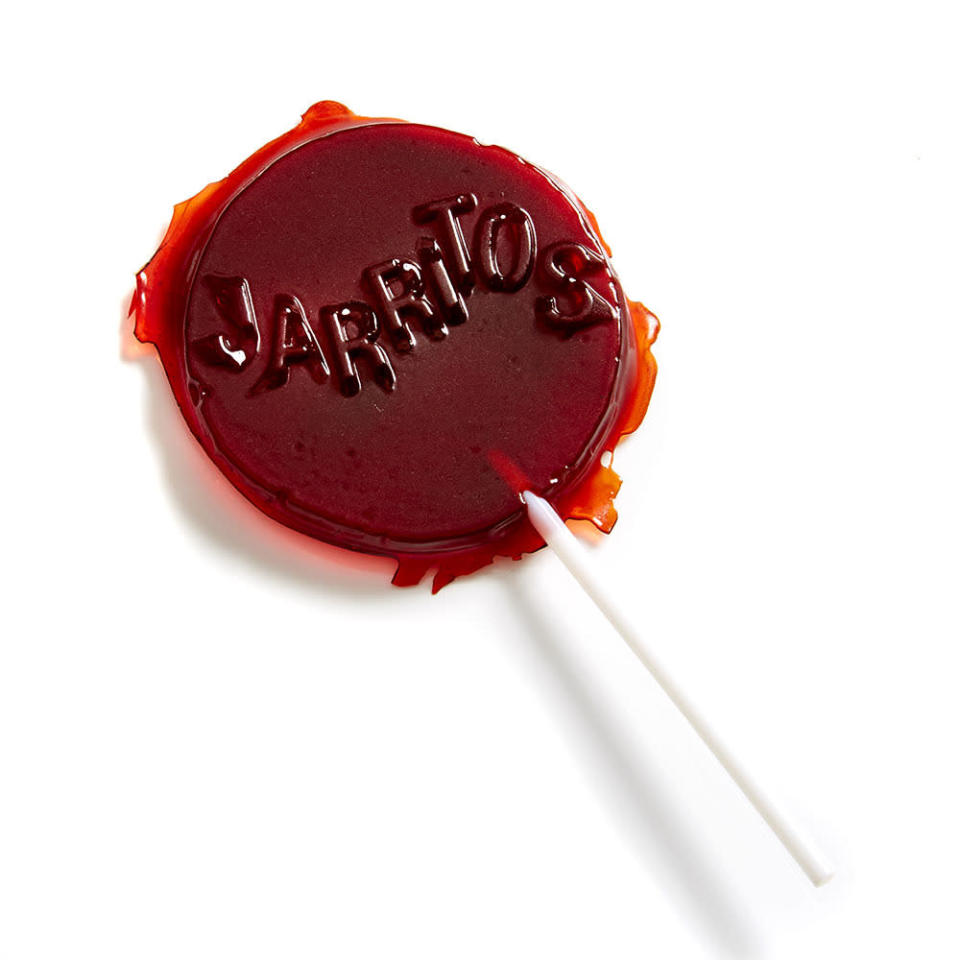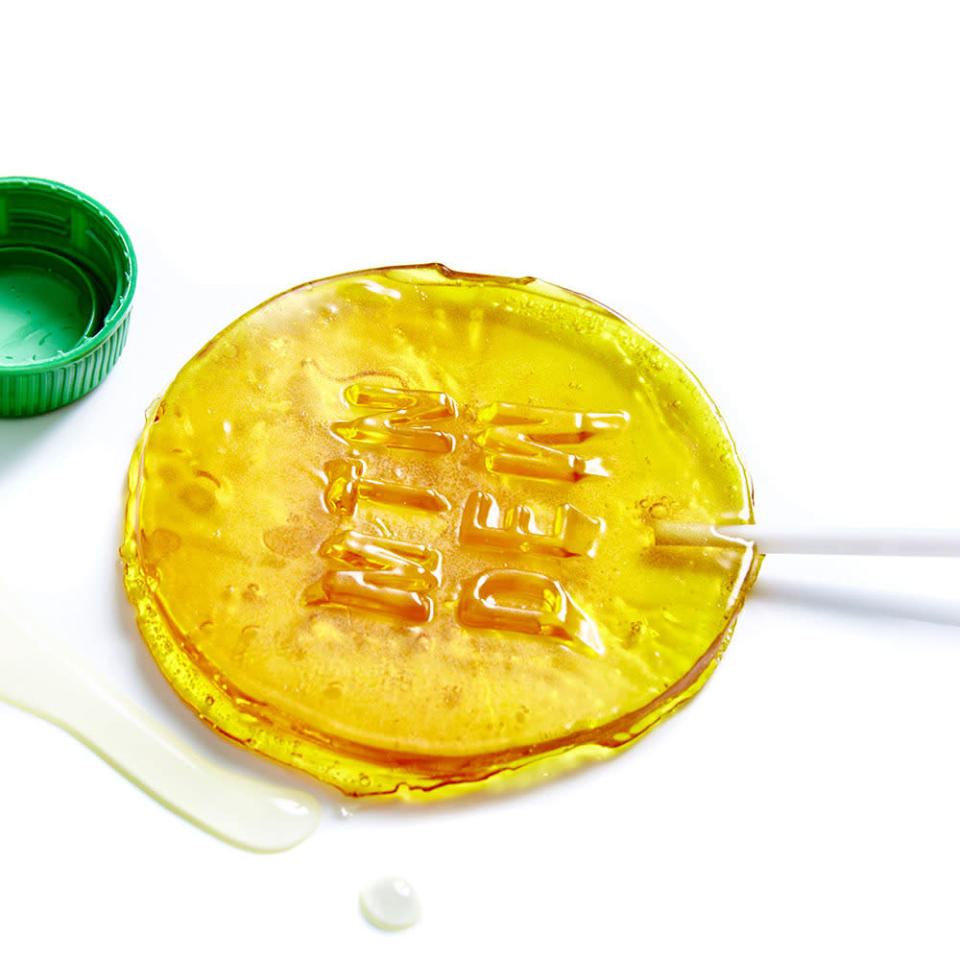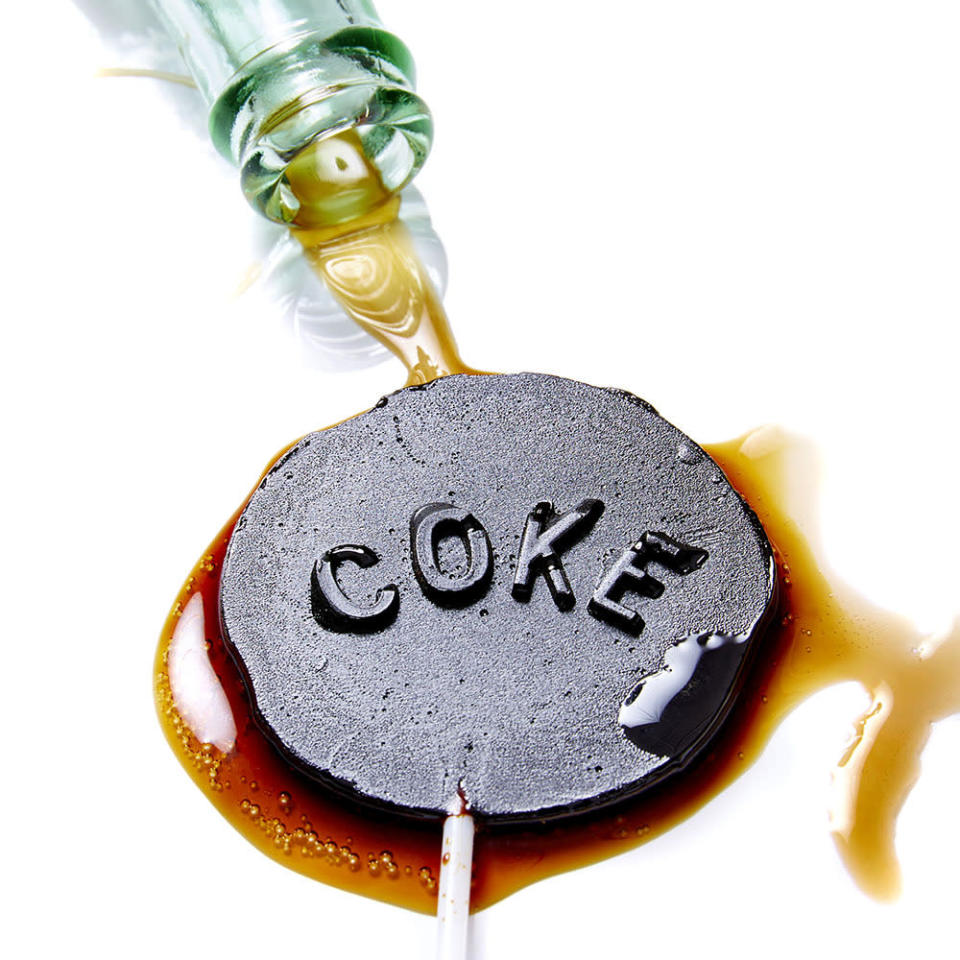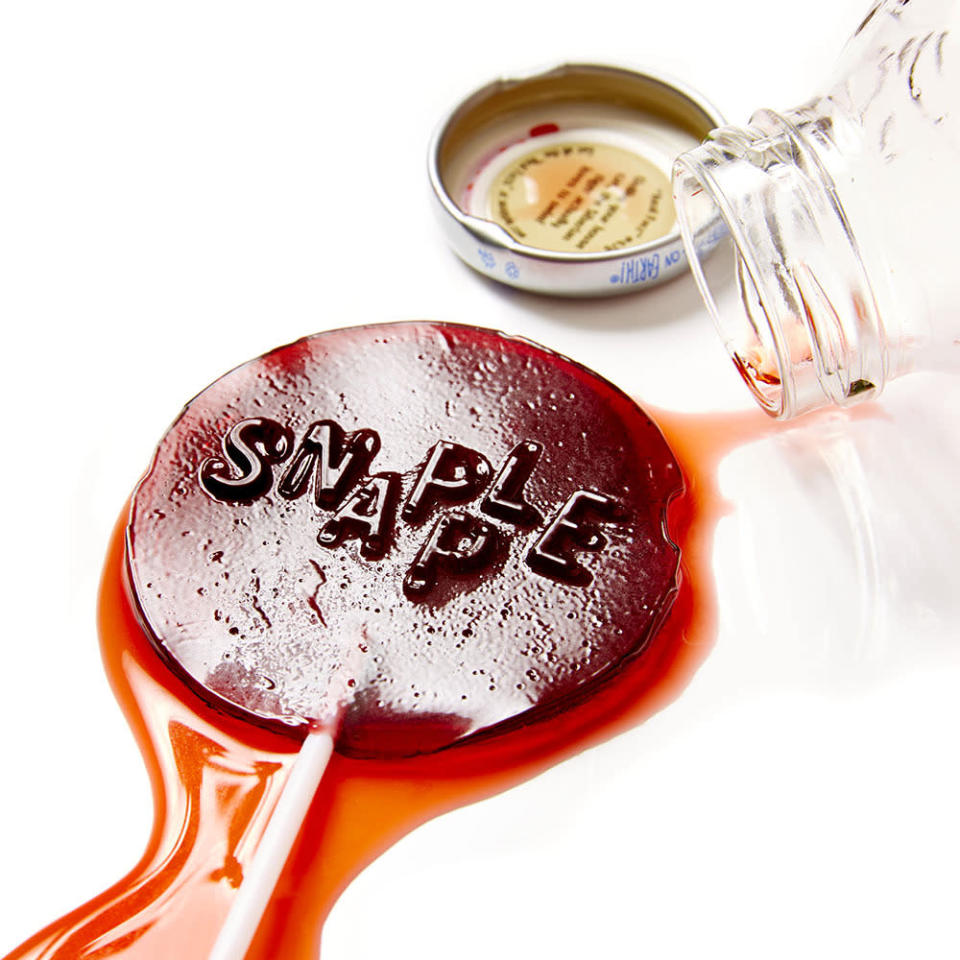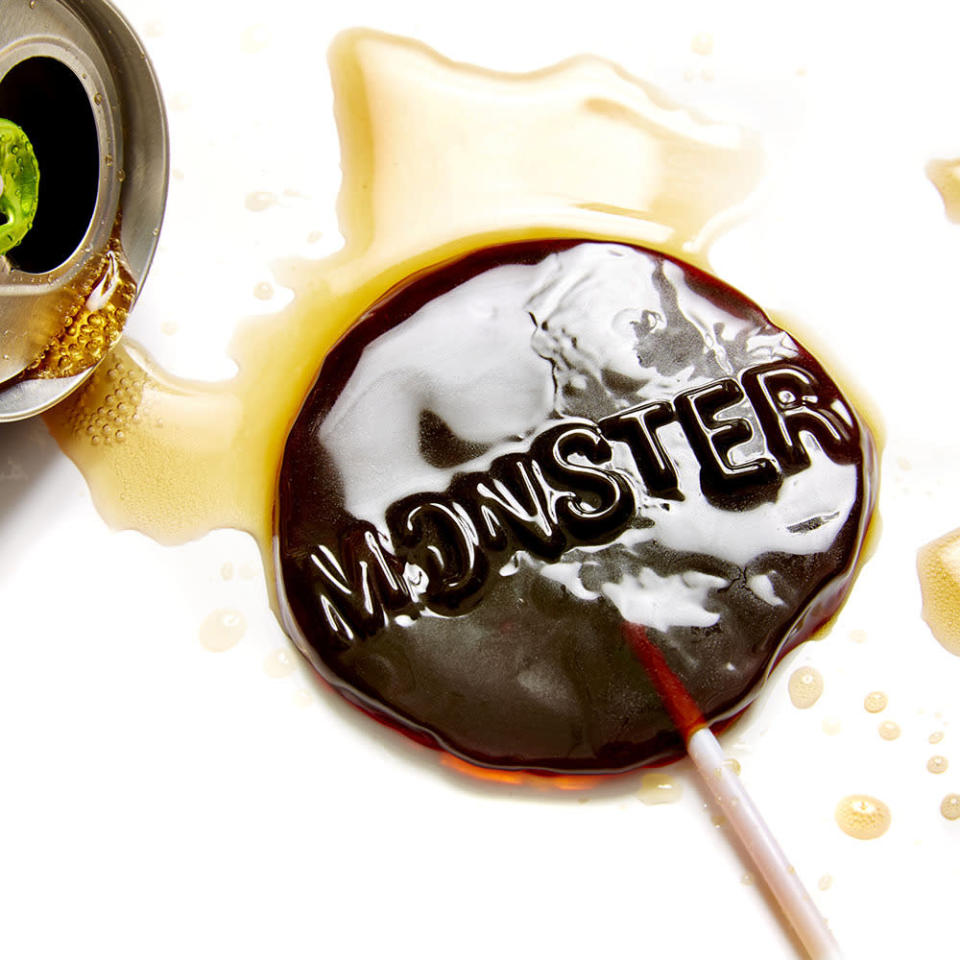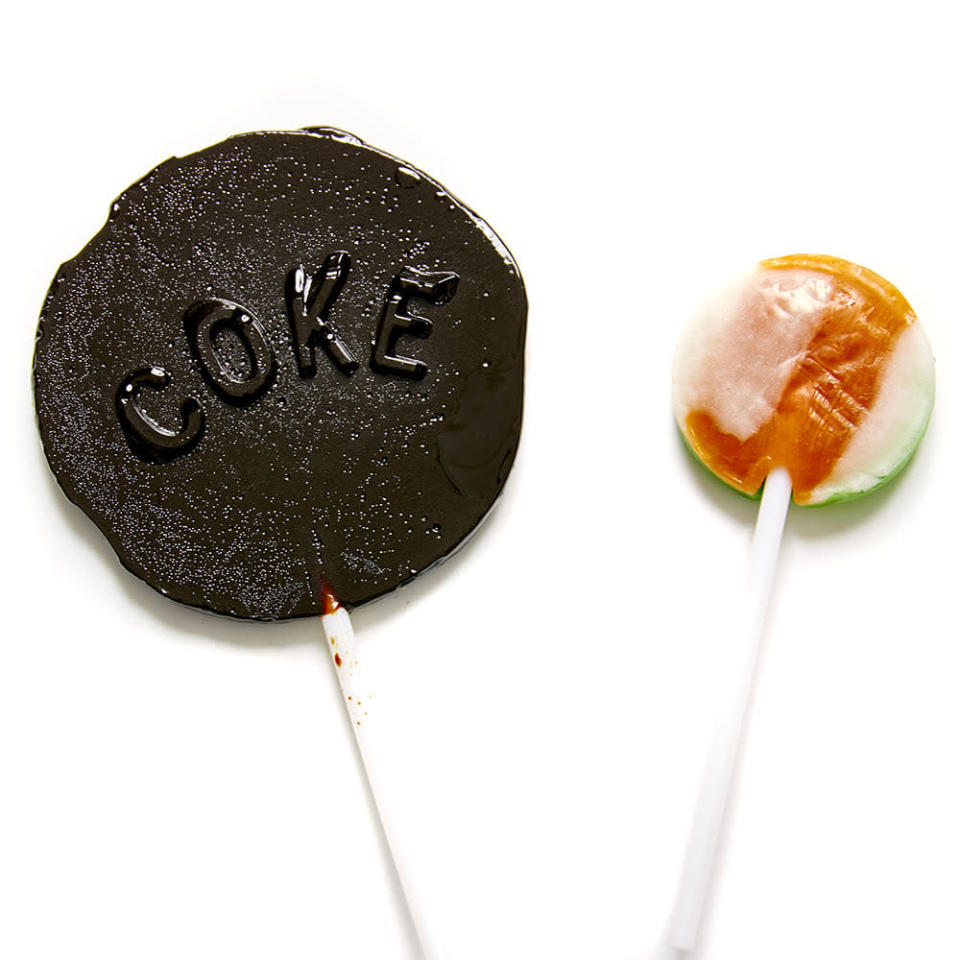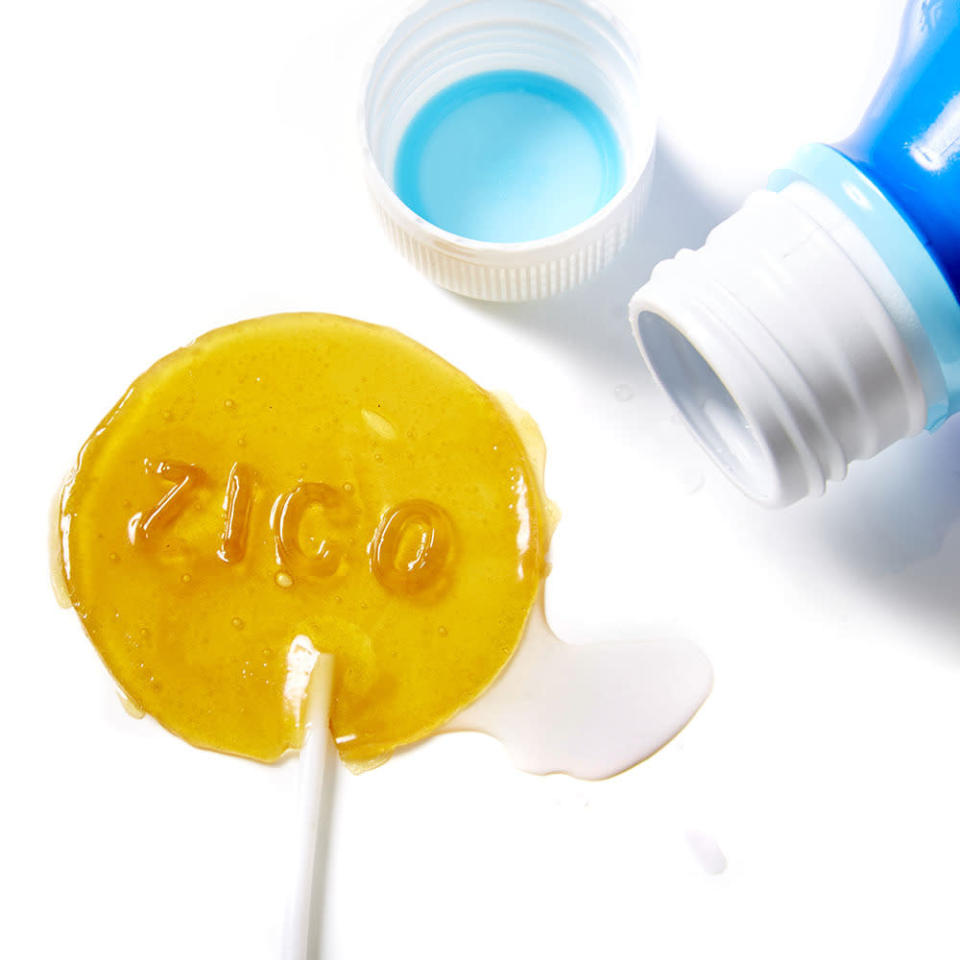This Is Your Favorite Drink as a Lollipop (and It Isn't Pretty)
A Brooklyn-based photographer has created artwork that visually showcases how much sugar is actually in popular drinks.
Henry Hargreaves made lollipops using dehydrated sugar from several sweet beverages like Coca-Cola, Mountain Dew, Powerade, Snapple, and Zico coconut water. And the results are … interesting.
The confections are much larger than the average lollipop, and the thickest include those made from Coca-Cola (39 grams of sugar per 12-ounce can) and Mountain Dew (46 grams of sugar per 12-ounce can). The smallest? The pop created from Zico coconut water, which contains 14 grams of sugar per 11-ounce serving.
“I wanted to do a series showing how much sugar is in soft drinks,” Hargreaves tells Yahoo Health. “The pile of sugar has been done before. It’s actually kind of boring and doesn’t really tell you much, so I decided to reduce it down to sludge to make the statement that drinks are really just lollipops for grownups.”
To create the lollipops, Hargreaves poured each drink into a pan and heated them to boil off the water, leaving a caramelized substance behind. He then poured the sugary substance into lollipop molds emblazoned with the name of each beverage. Once they cooled, he had a visual representation of the amount of sugar in each.
Related: 20 Foods That Are Sugar Bombs
“I figure that’s what you’re essentially getting: candy in costume as a soft drink,” Hargreaves says.
Hargreaves used single-bottle servings for each lollipop, so what you see is what you’re drinking. But he also points out that “quite a few of them overflowed the mold.”
While soda sales have been declining, nearly 25 percent of Americans drink soda on a regular basis, according to data collected by the Centers for Disease Control and Prevention.
Drinking what is essentially an oversized lollipop really isn’t a great idea, registered dietitian nutritionist Beth Warren, author of Living a Real Life With Real Food, tells Yahoo Health.
Sugary beverages are particularly troublesome, she says, because there is nothing else in them — such as fiber, fat, and protein — which will help slow down your body’s absorption of the sugar. “It’s like opening the floodgates, rushing in a load of sugar that our bodies will not be able to manage all at once and will cause damage,” she says.
Related: 21 Good Reasons to Eat Less Sugar That Have Nothing to Do With Weight Loss
Among the more immediate damage is weight gain. Once the sugar is in your body, it’s broken down to be utilized as energy, Warren explains. If you ingest more of it than your body can use, it can be converted into fat.
The negative side effects don’t end there: Research has also linked regular soda consumption with a greater risk of developing Type 2 diabetes and pancreatic cancer.
Unfortunately, there is no set healthy threshold of added sugar you can have in your diet. Since your body views all sugars as equal, Warren recommends that you “try and have as close to zero as possible of added sugar and to limit foods with natural sugars.” (However, the World Health Organization recommends having less than six teaspoons, or 25 grams, of added sugar per day.)
Interested in buying the pops? Hargreaves says he isn’t selling them, adding, “You can buy them with water added at any store.”
Read This Next: Why We Might Want To Worry More About Sugar Than Salt For Heart Health
